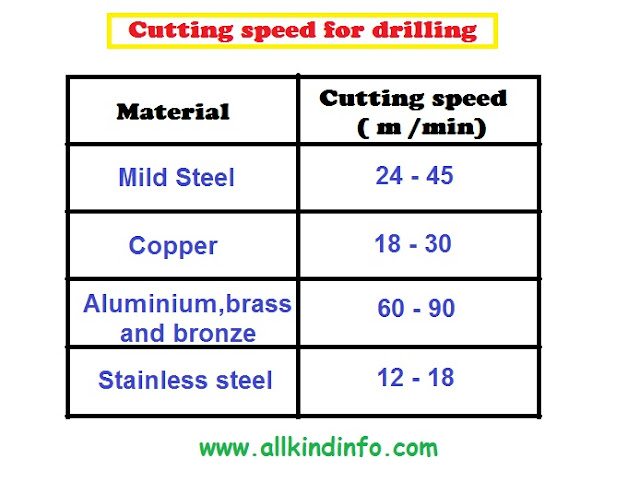The Drilling tools are called drills which are used to make round holes in the work piece. There are three most commonly used drills as follows.
Flat Drill
Simple in shape and has two cutting edges at the angle of 60 degree.
Straight Fluted Drill
This drill is used to make holes in brass,copper and other soft metals. This drill has zero rake.
Twist Drill
It is an end cutting tool with two or three cutting lips. Cylindrical shaped body consists of grooves with cutting edges. The grooves are called flutes. Other parts of twisted drill are
1: Point
Cone shaped and provide cutting to the metal.It has three major parts
(i) Heel
Cutting edge back point of the back portion of the point is a heel of drill.
(ii) Lips
Cutting edges of the drill bits are called lips.
(iii) Dead center
Extreme tip of the twist drill bit is called dead center.This should be placed exact center of the center punch mark.
2: Body
Area between the point and the shank is the body of the drill.It consists of three major parts.
[ads-post]
(i)Flutes
Two or more groove with spiral shape that run the body of the drill is called flutes. Function of the flutes are to provide lubricants/coolant flow to the end point, cut the chip easily and help from the cutting edge to the drill point.
(ii) Margin
Narrow strip back from the flutes.It is the diameter of the whole drill bit.
(iii) Body Clearance.
Part of the body which reduces friction between the wall of the hole and the drill.
3: Shank
The portion of clamping the drill in the spindle is called shank.It may be straight or tapered angle.
Angles of Twist drill
Point angle
Angle included between the two lips projected upon a plane parallel to the drill axis and parallel to the cutting lips.Its usual value is 118 degree but it can varies from metal to metal.
Lip Relief angle.
Angle created by flank and a plane at right angles to the drill axis. It value is 12 to 15 degree.
Chisel edge angle.
It is the obtuse angle included between the chisel edge and the lip as viewed from the end of the drill. The value of this angle varies 120 to 135 degree.




Post a Comment